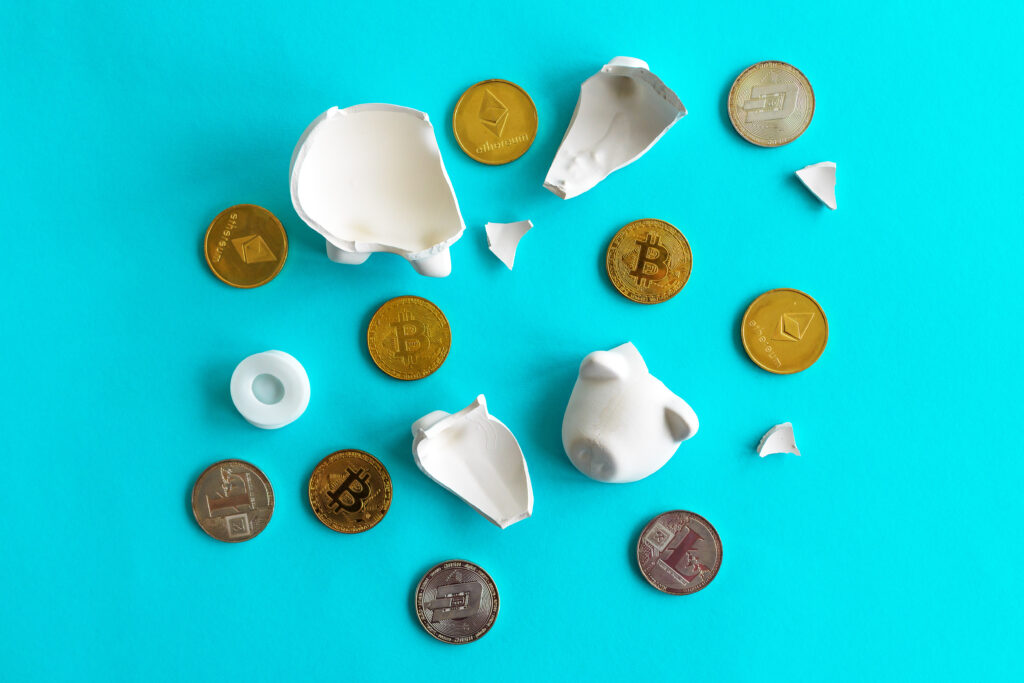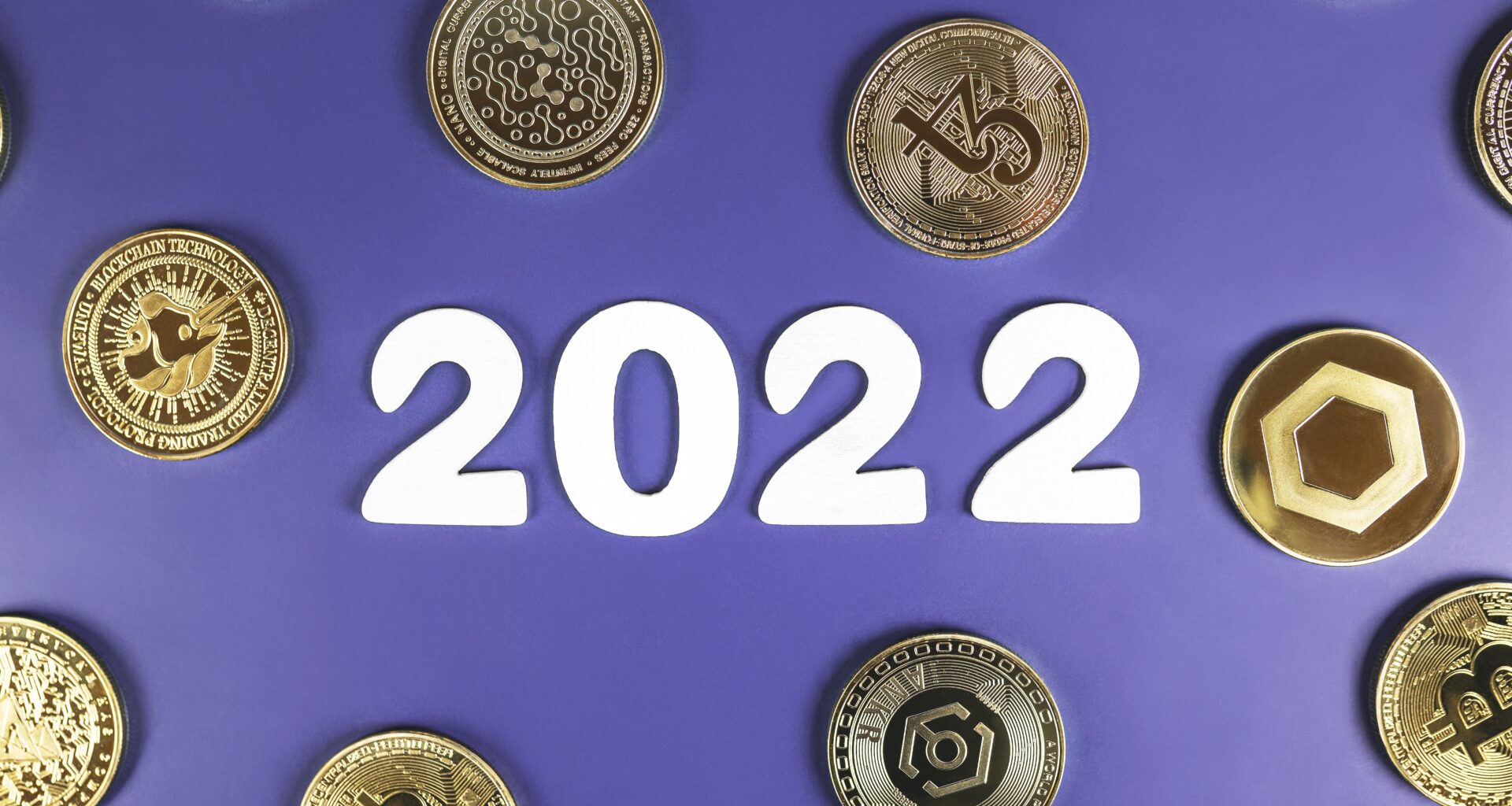Let’s be honest: 2022 always had a tough act to follow.
The previous two years of crypto history were some of the most promising and exciting since Satoshi’s first block, with floods of institutional investment, massive bullish rallies and a sort of normalisation of crypto ownership across the mainstream customer base.
Most investors are quite savvy as far as game theory goes, so they probably wouldn’t have fallen for a reverse gambler’s fallacy. In fact, it’s safe to say that the very generous amount of new currency printed by world governments across the COVID-19 relief policy spectrum had already alerted most forward-looking financial players to possible tough times ahead.
That said, it’s hard to imagine anyone could have predicted quite how many different and unique complicating macroeconomic factors ended up putting pressure on price action throughout the last 12 months.
And, even more so, the spectacularly tragic way this pressure would have blown the lid off many then-revered and well-established crypto enterprises, hurting all those new and enthusiastic investors.
Despite all the negativity and pessimism, not even a proverbial ‘annus horribilis’ like 2022 could stop the progress of the exciting tech behind crypto and the way it’s being increasingly interwoven with traditional financial markets.
Let’s take a look at some of the key highlights of the past year and their lasting legacies.
The Macro Context

One of the most unexpected and yet most influential events of the year started unfolding in the early days of the year: Putin’s Russia shocked the world by eventually turning decades of empty threats into reality when its tanks started rolling into Ukraine on the 24th of February.
What was planned as a sort of ‘blitzkrieg’ turned into an exhausting and slow war of attrition, and the battlefield expanded to the global stock and energy markets. Both the sanctions devised to stunt the aggressors financially and the disruption of commercial exports from Ukraine and Russia chilled price action on a drastic scale.
Another key player of international trade, China, was left to deal with the long tail end of a badly managed pandemic response. Its tough lockdowns in 2022 felt not only despotic and immediately anachronistic, both also highly damaging to the country’s industrial activity, real estate market and overall socio-political balance. The disruption of supply chains and devaluation of Chinese companies that followed added fuel to the fire of macroeconomic issues throughout the whole year.
NATO countries weren’t doing much better either. The aforementioned domino effect of the Ukraine war contributed heavily to fueling a cost of living crisis that was already brewing in the EU and UK. The measures put into place to prop the block’s economy when it became the epicentre of the COVID pandemic in 2020 reared their ugly inflationary head, sending the pound tumbling and collapsing one British government after the other. The Federal Reserve’s continuing interest rate rises struggled to quickly bring down the devaluation of the dollar, and generated a very pessimistic environment for several months on end.
All of these incredibly challenging factors combined into the perfect recipe for a string of recession forecasts, which are often self-fulfilling. This, in turn, triggered de-risking attitudes across the entire board – and with crypto’s large scale volatility, it was one of the first sectors to suffer heavily from the outflow of cash and plunge into a literal ‘crypto winter’.
The Crypto Winter

Before we look at the most prominent moments and factors that accompanied this temporary demise, it’s hard to ignore the raw numbers: they tell the story of a widely resized industry which suffered a really heavy outflow.
Bitcoin, still the proverbial cryptocurrency over 12 years after its inception, tumbled from a high of $69k in 2021 to a barren low of $17k at the time of writing. Ethereum, despite some positive news on the tech side, fell from $4.8k to $1.2k in that same timespan. The sector as a whole bled a lot of cash and was downsized to a market cap of 800 billion USD from a staggering 2.9 trillion USD accumulated during 2021.
Crypto was not sliding in a vacuum, though. Stocks behaved very similarly, further cementing the idea that cryptocurrencies have ceased being a hedge against inflation and are now better treated as a high-risk tech investment.
The S&P 500 index repeatedly dipped below a 20% devaluation from peak price throughout the year, crossing a line conventionally used to define a bear market, reaching a -13% downturn YTD by November.
The crisis doesn’t quite match the proportion of other big financial market shocks of the 21st century, where the peak price devaluation reached between -33% (2020 COVID pandemic) and -50% (seen both during the 2008 subprime crisis and the dot com bubble of the early 2000s).
Despite this, it’ll also enter the books as a turning point of macroeconomic history, and it would be foolish to not accept its important influence on crypto price action). These paradigm shifts were so brutal that they eventually exposed some of the biggest yet best hidden vulnerabilities in the crypto space, and triggered a series of catastrophic collapses.
The TerraUSD Catastrophe

Described at the time of its inception as the ‘new Mt.Gox’ (an exchange whose collapse almost killed the entire crypto industry in its infancy days) it turned out to be more similar to the first snowflake of an avalanche that would bury the entire crypto lending sector.
TerraUSD was an algorithmic stablecoin created by visionary-turned-fugitive Do Kwon, and widely used as part of an asset class designed, ironically, to guarantee the stability of the entire crypto sector.
It all came crashing down when the balancing cryptocurrency used to hold its dollar peg tanked in value during a widespread crypto crash last spring. The token, LUNA, was key to TerraUSD holding its peg to the dollar, and it had fallen as low as $0.30, wiping out capital across the board along the way.
In the days that followed and preceded, several other algorithmic stablecoins depegged, with USDN (Neutrino) and Beanstalk following a very similar fate.
It was not a coincidence, but rather a canary in a coal mine type of event, underlining the dangerous under collateralization carried forward by many projects in the space and their poorly hidden unsustainability outside of extremely bullish scenarios. In many ways, a precursor of the ensuing crypto lending and yielding collapses to come.
The Crypto Lending Collapse

The list of lenders and yield farming providers that would have been household, reputable players in this industry just a year ago and who are now dealing with arrests, lawsuits and infamy is actually too long for us to review it in full.
We’ve talked about Voyager before, which was followed closely and outmatched in size by the folding of Celsius Network, BlockFi, and, very recently, the FTX and Alameda Research duo.
The crisis experienced by these lenders was based on two factors: firstly, the risky and straight up fraudulent approaches to debt and wealth management that didn’t play out. These were enabled by the complete lack of proper industry regulations, as well as fuelled by the massive influx of cash into any form of investment over 2020-2021, regardless of its validity or long term prospects.
Secondly, these companies where heavily financially intertwined by a complex system of collateralised loans, risky funding deals and general overextension and poor risk management. As Simon Bankman-Fried said himself, they said and did ‘a lot of dumb stuff’.
These collapses were stemmed from niche areas of crypto investment, but snowballed into crashes so huge they became prominently featured on all mainstream media, attracting significant public attention – and anger. And there’s nothing better than public anger to attract political and regulatory attention.
The Regulatory Wave

The coming of state-mandated regulation to the world of crypto has always been the subject of debate and, for some, identified as an ideological compromise. After all, crypto was born to be as decentralised and as stateless as possible – but like many ideologies, it has had to face the harsh reality of modern society.
While this period of uncertainty and instability has fueled the negativity stemming from key figures such as the US Secretary of the Treasury, Janet Yellen, who has patiently awaited each and every false step taken by the crypto industry to undermine its significance and call for heavy regulatory additions, it’s not been an universal feature of the relationship between politics and blockchain-based tokens.
Rishi Sunak, who became the UK’s Prime Minister in 2022 after the spectacular demise of Liz Truss in just 44 days, is a great supporter of developing crypto-friendly regulation to prop up the country’s investments in that area – an example of positive legislative intention.
In an even more outward (and debatably, much less considerate) display of faith in the future of blockchain-based currency, El Salvador infamously adopted Bitcoin as legal tender. While things haven’t been going swimmingly, the idea of a sovereign nation making such a definite step towards crypto adoption would have been unthinkable just a couple of years ago.
There is a lot left to do, but it’s clear that modern politics is on its way to relinquishing its usual blind scaremongering approach to crypto matters, and moving towards a more nuanced and enlightened stance. And private corporations have noticed too.
Public Blockchains Conquer the Private Sector

Adoption of blockchain technologies by ‘traditional’ private enterprises shouldn’t be a surprise in 2023: it’s a well-established phenomenon which took off during the 2017 bull run and which has exponentially evolved in recent years. It’s led to a world where over half of the world’s top banks invest part of their funds in the blockchain world.
We have recently mentioned Google Cloud’s grand entrance in the world of blockchain-centric web services through its Solana partnership, a great example of how big tech’s involvement with cryptography doesn’t need to be token centric.
What is, however, perhaps the biggest adoption example of Q4 2022 is Mastercard’s announcement that they will launch a service to help their clients enable cryptocurrency trading abilities.
The payments behemoth will use Paxos, a trading platform also employed by Paypal to offer crypto services, to connect its users to the token offering. And most importantly, Mastercard will be guaranteeing due diligence and security, fulfilling its role as an institutional intermediary and shielding its customers from the direct risk they’d be exposed to if they engaged in a high-risk tech environment such as that of digital currency.
This might not quite be the degree of financial independence imagined by Satoshi, but it’s likely to take society one big step closer to full cryptocurrency adoption.
Proof of the Future

With regulatory and adoption progress underway across the board, one remaining weakness of the case for crypto has always been its scalability, both in tech and environmental terms.
2022 saw another big leap forward for both, which would have been front and centre of the narrative if it had not been obscured by the gloomy macroeconomic context and saturation of the crypto news cycle. We are, of course, talking about Ethereum’s switch to Proof of Stake protocols.
There are many reasons to rejoice for this piece of news, mainly that staking is a fundamentally superior protocol and the one that produces the most democratic reward mechanism possible. But the one the made the rounds outside of sectorial media was its green silver lining: PoS means Ethereum is 99.95% greener and more sustainable than ever before.
This might seem a small PR benefit for now, but if the goal of this tech is worldwide, mainstream adoption, this change has just made Ethereum the front runner in the race towards scalable and popular fintech solutions for the future.
2023 Predictions Are In

The brief run down we’ve just covered tells us something: 2022 was a colossal year for crypto history. It was certainly marred by a fair share of negativity and several industry shake-ups, but it’s fair to say that it’s during the most traumatic crises that the foundations of future achievements are built, and we’ve been seeing fair share of those too.
Aside from, hopefully, a respite from the downward price action and a continued adoption wave across both governmental and private institutions, what can we hope from the 2023 of crypto?
Quite likely, we can hope for its continued existence and prosperity for a start – unlike what a recent Economist cover story seemed to suggest.
Some believe it will be the year of Dapps, with the blockchain community focusing most of its development efforts across next year on gaming and identity infrastructure, as well as a general betterment of Web2 offerings. Others believe that the many institutional forces in the space will be Brazil, at governmental level, and Twitter, in the private sphere.
Like price action, there’s a small amount of clues and a lot of guesswork in predicting these things, but one thing is certain: with the amount of blood in the streets seen in 2022, anyone with a solid, forward-facing crypto strategy ready for 2023 is likely to be smiling all the way through a year likely to see a bounce back from macroeconomic pressure.
You’ve heard it here first.









